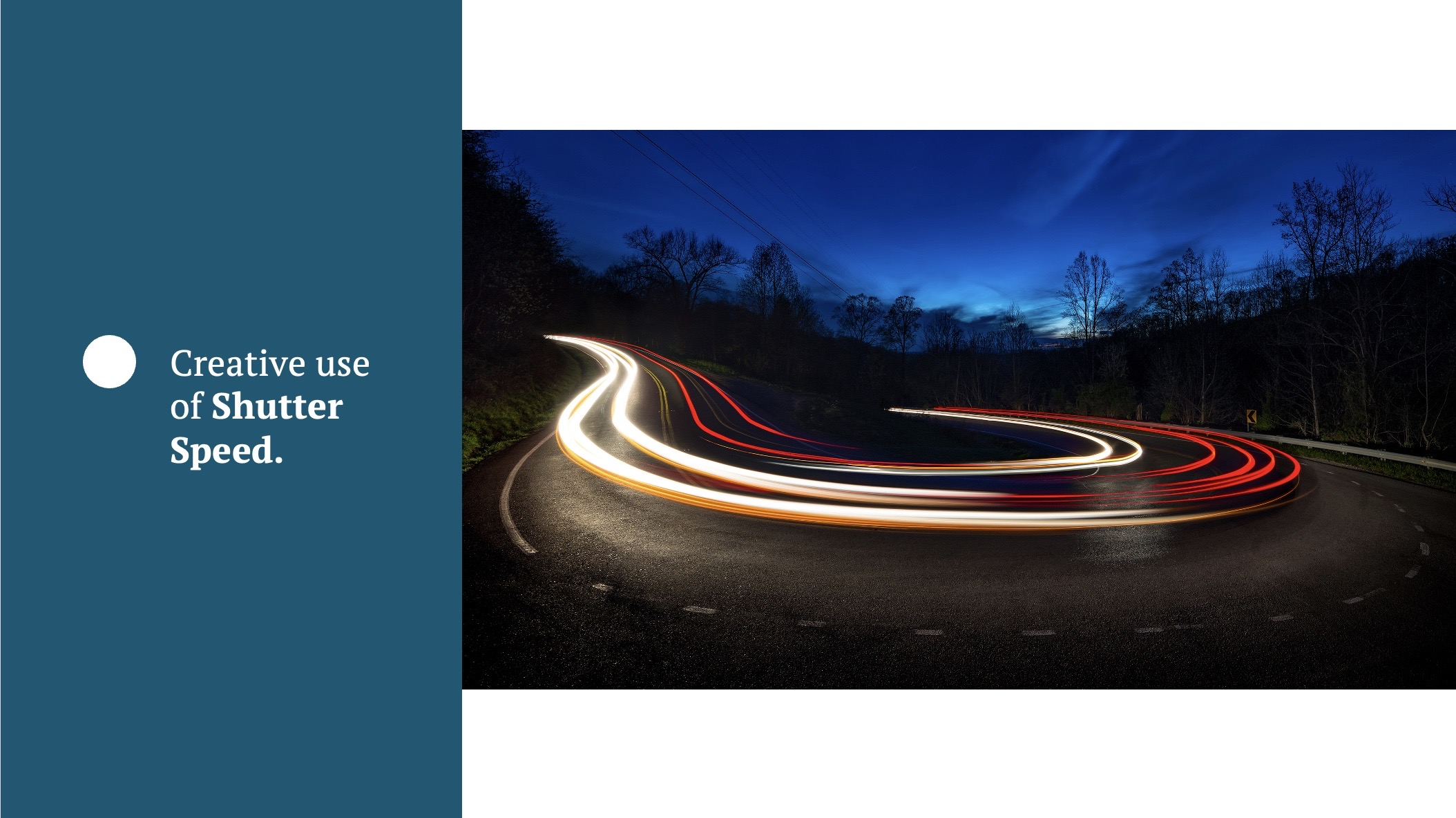Shutter Speed for Slow Motion
What is Shutter Speed for Slow Motion in Photography?
Shutter speed is relative to time value or duration—in other words, how long it takes your camera to take a picture. When you press the shutter release button and the photo is taken quickly, your camera uses a faster shutter speed compared to when it is more delayed with a slower shutter speed.
Examples of fast and slow shutter speeds include:
Capturing action as it appears, with no creative blur, using a fast 1/2000 of a second shutter speed.
Capturing action like a flowing river with creative blur using a slow 1/30 or 1/8 of a second.
For subjects like fireworks or northern lights, even slower shutter speeds of seconds are typical, such as four to eight seconds.
When looking at this camera setting information, the shutter speed is represented by the number 30. Although it’s not displayed as a fraction, it is 1/30th of a second. If it were 30 seconds, the number would include the “ mark, like this 30”. Additionally, the F5 is the f-stop which is related to aperture.
Moving water and fireworks provide excellent opportunities to experiment with and practice photography techniques when using shutter speed for slow motion. This can include the creative effect of blurring the motion of moving water and capturing the bursts of fireworks.
Capturing fireworks and feathering the appearance of moving water requires a slower shutter speed, which gives the camera more time to take the photo.
For a more detailed explanation and to view graphics with examples of aperture (f-stop), ISO, and shutter speed for exposure, please click here: Exposure Triangle for Beginner Photographers.
Water flowing over the rocks and foliage is captured with a slow shutter speed to soften the details in the water as it splashes over the landscape. Camera capture: f/22, 1/8 (one-eighth of a second shutter speed), ISO 800.
When you encounter a scene with flowing water, consider the creative possibilities for using shutter speed for slow-motion effects, such as the examples above and below. In situations when you’re using a slow shutter speed, a tripod is essential to help avoid blurry photos caused by camera shake.
Camera shake is the inability to hold the camera steady enough to capture the scene or subject clearly in the length of time it takes the camera to record it, and results in a blurry photo.
As the photographer, considering how you want to capture a scene lends itself to building an ever-improving collection of pictures. Using shutter speed for slow motion is an option and technique full of possibilities.
The rocks along the shoreline with visible details contrast the silky flow of the river when captured using a slow shutter speed for creative effects. This was captured using film, and when I find my notes, from years ago, I’ll post the settings.
However, although I’m not positive about the length of time, the feathery look of the flowing water reveals that a slower (longer) shutter speed was used. Otherwise, you would see the splash and spray in crisp details if a fast shutter speed was used instead.
One aspect to consider when the opportunity arises to practice fireworks photography is the duration of time, or shutter speed, to capture the bursts. Using a faster shutter speed such as:
1/00 to 1/500 of a second helps to capture the burst with increased crisp detail.
Helps to reduce the length of light trails caused by a slower or longer shutter speed.
You may miss the full capture if the burst is ongoing and your camera has already taken the picture when the best burst lights up the sky above you.
If your pictures are underexposed or too dark, a longer shutter speed is necessary.
A slow-shutter-speed for motion captures fireworks bursting in the night sky. The camera settings are f/11, 6.7” (6.7 seconds) shutter speed, and ISO 800.
I used a slower or longer shutter speed, as noted in the examples above and below. Using a slower shutter speed:
My shutter speed of 6.7” and 4.4” (seconds) records the bursts for longer, capturing more of the action.
The slower speed will create longer light streaks as the camera has more time to capture the action as it unfolds.
When too many fireworks go off at once, it can result in an overexposed or too bright a photo.
For longer shutter speeds, a tripod is essential.
Fireworks in the night sky were captured with the following camera settings: f/9, 4.4 seconds, ISO 800.
When you see this symbol, “ that looks like a quotation mark or the designation for inches, it means the shutter speed is now in seconds. For example, 1/4” is a quarter of a second, 1” is one second, 30” is thirty seconds, and at 30” it seems like the camera takes forever to “take the photo.”
As you can imagine, taking photos with a slow shutter speed, especially in the seconds,” requires a tripod or stable surface to stabilize the camera. In these situations, using your camera’s self-timer function, a cable release, or remote trigger can help avoid camera shake, as you don’t physically press the shutter release button to begin taking the photo, except to begin the process with the self-timer mode.
A fireworks image that’s blurry due to camera shake and overexposed in the center of the two bursts that are side by side.
Here’s an example of a blurry northern lights capture with camera shake that’s caused by hand holding the camera for a long shutter speed of 8” (seconds), f/4, ISO 1250.
The settings for the beaver photograph below, while taken with a slower shutter speed, work because the beaver is mostly stationary and moves slowly when eating.
A beaver feeds on vegetation after bringing it up from the lake bottom onto the ice. The camera settings are the same for this picture and the one below, but notice the blur caused by the shutter speed being too slow for the beaver’s speed of movement. f/8, 1/100, ISO 1250.
Here, the beaver emerges from the open water onto the ice to feed on the vegetation. Notice that only a small area around the face appears in focus. The 1/100-second shutter speed is too slow to capture the faster action compared to the previous image. A 1/500 of a second or faster would have improved the result.
The capture of the Ruddy Ducks below starkly contrasts using a slow shutter speed for slow motion. By using a fast shutter speed setting, notice the detail in the water as the action is suspended. Crisp detail is visible in the churning water.
The phrase "freeze the action” in photography applies to these dueling ducks because the action is crisp and captured clearly. As you can see, there is an opportunity for creativity when taking photos of scenes and subjects using a slow shutter speed, which gives you different results compared to freezing the action with faster shutter speeds.
Two Ruddy Ducks rise out of the water at each other, and using a fast shutter speed freezes the action. f/9, 1/4000 (of a second), and ISO 1600.
Once again, in comparison, a slower shutter speed results in a blurred photo as the Canada Goose pair takes flight. I’m okay with the wing blur as it shows motion, and most of their body is in acceptable focus, even if not tack sharp. However, due to camera movement when following their take-off and too slow a shutter speed, there is reduced clarity in the background and the ice underneath. In my opinion, a clearer, more in-focus rendition is preferable.
A pair of Canada Geese take flight from an ice-covered lake in early spring. In this instance, a shutter speed of 1/500 of a second is too slow to capture the action in focused detail. However, the blur of the wings adds an element of creative motion nonetheless. f/6.3, 1/500, ISO 800.
In conclusion:
Shutter speed is the time the camera takes to capture your scene or subject, according to camera settings.
The shutter speed for slow motion is generally a longer exposure, such as 1/500 of a second, 1/60, and slower, extending into seconds, minutes, and hours.
Slower shutter speeds give you the ability to capture scenes and subjects creatively. For example, you can create a silky soft flow of water, wings blurred on birds to portray motion, star trails in the night sky, the northern lights, vehicle taillights, and so much more.
Shutter speed also affects exposure, or how bright or dark your photos are. In addition to a slow shutter speed for creative and capture purposes, shutter speed is a primary factor in exposure. If you change only the duration of time to photograph your scene or subject, the following will happen based on camera settings:
A slow shutter speed will make your photo brighter.
A faster shutter speed will make your photo darker.
However, it’s not necessarily that simple, as other factors come into play, such as the Mode or setting you are using, such as Auto mode, Aperture Priority, or Shutter Speed Priority. For an introduction to exposure, please click here: Exposure Triangle for Beginner Photographers, or return to the main page of my Blog for more helpful beginner photography posts.













